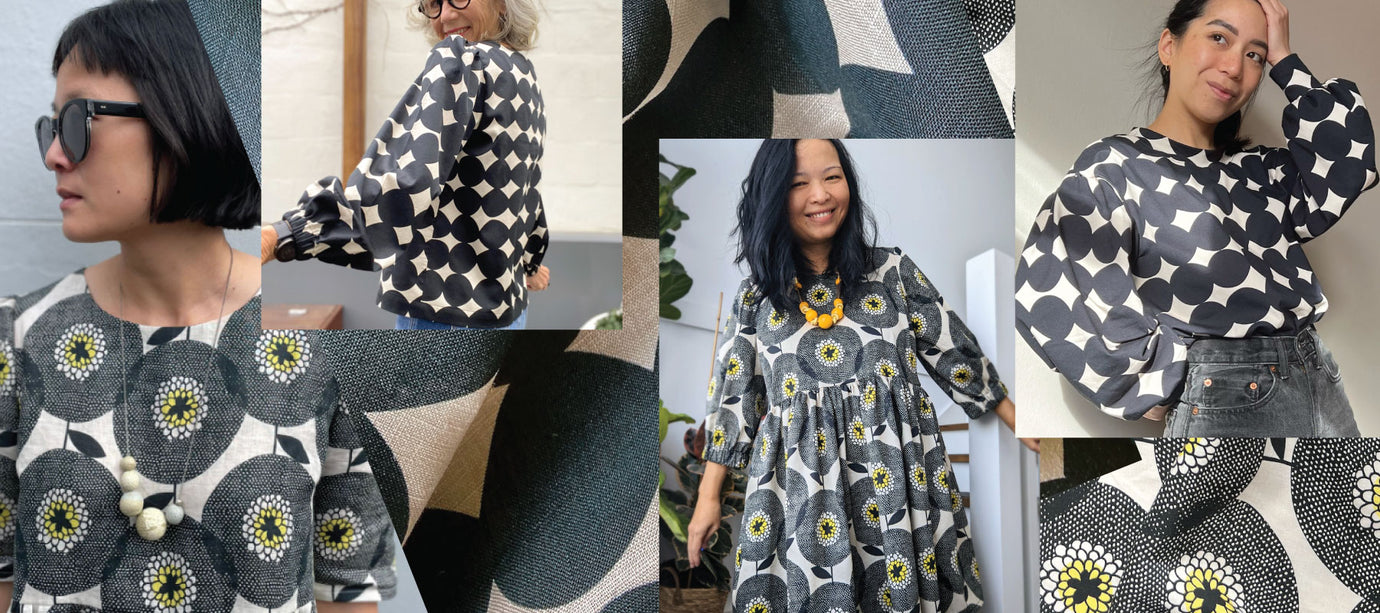Crafting Textiles : Unveiling the Artistry Behind the Textile Design Process

- INSPIRATION
- DESIGNING THE ARTWORK AND GRAPHICS
- PUTTING THE GRAPHICS INTO A TEXTILE REPEAT
- SELECTING COLOUR PALETTES
- CHOOSING APPROPRIATE SUBSTRATES FOR EACH DESIGN
- ORDERING SAMPLING
- RECEIVING SAMPLING, DOING FINAL SELECTIONS AND ORDERING PRODUCTION
- CREATING SOME GARMENTS OR SENDING TO SEWERS WE LOVE TO HELP CREATE THE MARKETING CONTENT
- LAUNCH
INSPIRATION
My Inspiration always comes from a number of sources, and the Kiewa Collection was inspired by a strange mix!
Firstly I was lucky enough to go to New York in May, and I was loving all the twin sets in simple retro geo prints, hence my "Chainlink" fabrics for this collection. I don't often lean into browns, but I took a chance this time with cinnamon and a crisp dark brown because I saw a lot of simple brown, grey and green in New York and thought it offered something new.
I am also inspired by the brights that have appeared in all my trend research over the past months, so with butter and yellows, analogous pinks and the new greens "Kiewa" is an exceptionally fun colour palette.
At the time of creating this collection, my family and I had also decided to take 6 months away to live in our little log house in Victoria's high country. It sits in the Kiewa Valley, which inspired my very graphic botanical print "Kiewa". It is a lot bolder than I had planned but very fresh and fun. As usual I played with other prints in my library and ended up with the shapes from Kiewa laid over my Trellis Print. Thankfully anything goes in my world!

I am somewhat of an "emerging" textile artist, having had in-house designers in my business in it's first 5 years. I am definitely working on new skills but I am not yet getting time to draw or paint original art that I long to put on textiles. As a result, most of my work is grabbing elements that exist in my library and creating simple shapes on illustrator. This kind of process really suited the graphic result I was after.
I work the designs into a textile repeat which requires you to design a "tile" that will repeat seamlessly on all 4 sides. I do all this work digitally on Adobe Illustrator, sometimes using Photoshop. Because I like designs to be "oversized" I always start with quite a large art board and create the pattern within a square or rectangle boundary that will represent the size of a single repeating section.
To make it seamless I match up the elements first on corners, then on edges. I copy those elements and paste them precisely on the opposite side of the bounding box. Commands within Adobe Illustrator and Photoshop make it easy to paste the elements precisely so the pattern will flow continuously on the fabric printer.
I ALWAYS get carried away for hours in this process and after playing around with scale and options I normally develop many more prints than I finally run with.
SELECTING COLOUR PALETTES
- New Directions Pastel on Sleeves
- Shaded in Red/Pink on Front
- Tangled Butter on the Back
- Tangled Shapes in Black for binding.
We hacked the Soiree and used binding, as well as cropping the length and changing the neckline, using the binding as ties. With the pastels and brights both working well together on this top I think I achieved the colour harmony I was after.








